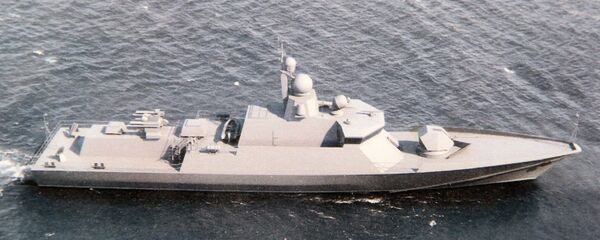"Today, the Northern Fleet's multipurpose nuclear submarine Severodvinsk successfully fired a Kalibr sea-based cruise missile. The crew conducted the underwater test launch from the Northern Fleet's test site in the Barents Sea. The target was in the Chizha testing ground in the Arkhangelsk region," the Russian Navy said in a press release.
According to the statement, the missile traveled around 373 miles.
The Russian Defense Ministry also released a video showing the launch.
"The doctrine itself and the practical steps made for its implementation indicate that Russia is ready to challenge Western geopolitical ambitions on land and at sea. … Russia calls for naval parity with the United States, and every Russian missile launch makes Western partners take Moscow’s interests into consideration," RIA Novosti contributor and political commentator Alexander Khrolenko wrote in an op-ed.
According to the author, such weapons as the Kalibr missile will help Russia increase its presence in the global ocean, without violating the Intermediate-Range Nuclear Forces Treaty (INF Treaty).
The Kalibr was first used in combat by the Russian Caspian Flotilla against Daesh targets in Syria in November 2015. Kalibr missiles have been repeatedly fired from Russia’s Buyan-M-class ships and Varshavyanka-class submarines against Daesh targets in Syria. Since the Kalibr missile has an operational range of up to 2,500 km, the launches were carried out from the Caspian and Mediterranean seas.
"Since they were used in combat for the first time, Kalibr missiles have traveled thousands of miles along complex routes and have hit targets, without being detected by NATO intelligence and radars. The US has been very concerned about the Kalibr’s capabilities in terms of the concept of 'distributed lethality,'" Khrolenko wrote.
He pointed out that the Kalibr would make Russia’s potential enemy vulnerable in any battle domain — land, sea and air.
The sea-based Kalibr system includes 3M-54/3m-54-1 anti-ship missiles and 3M-14 long-range missiles with a 400 kg warhead. The 3M-14 missile can reach a maximum speed of 700 meters per second and has an operational range of over 2,000 kilometers.
The 3M-14E missile (part of the Kalibr system) is based on the most advanced navigation technology and algorithms. The missile has a combined autonomous navigation system. Missile control is based on an interial navigation system, including a radio-altimeter and a GPS/GLONASS receiver. The missile can travel at an altitude of 20 meters above the sea and 50-150 meters above the ground, descending to 20 meters while approaching the target.
The missile can travel along a complicated trajectory which can be re-arranged during flight, for example in order to avoid a missile defense area or a complicated landscape. The warhead engages at the final stage of the flight, breaching enemy’s missile defense system at a hypersonic speed. The target is acquired with an automatic target seeking device.





